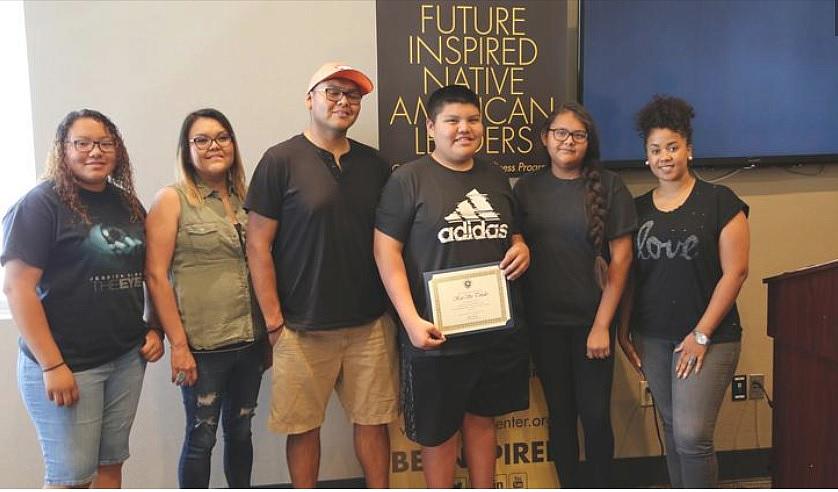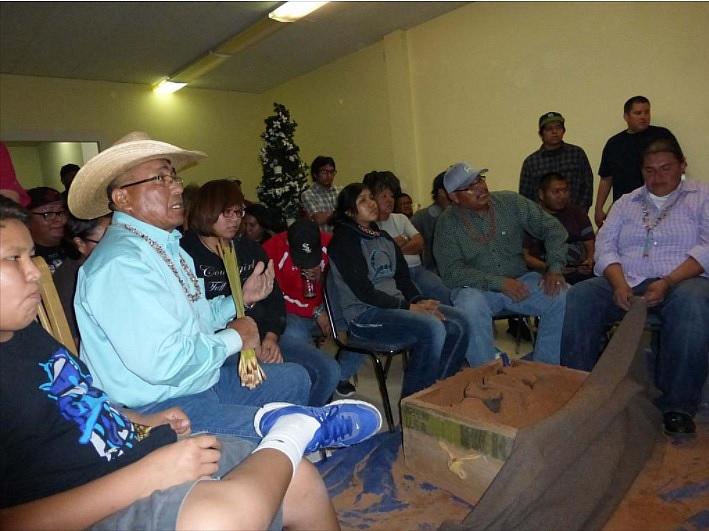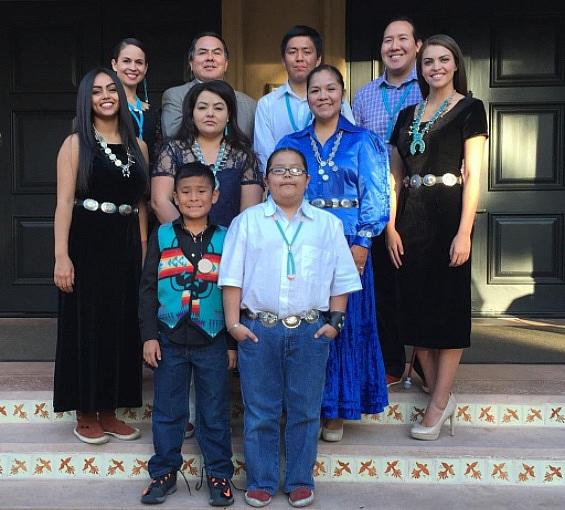Phoenix's Native American-focused nonprofits help support children, families
Reporting for this story was supported by the USC Center for Health Journalism‘s Health Journalism Fellowship.
Other stories in the series include:
Inside the Native American foster care crisis tearing families apart

The 2017 graduating class of Future Inspired Native American Leaders, a college readiness program presented by the Phoenix Indian Center to prepare them for educational and work success.
“Ruben” had just been released from jail after serving time for a drug-related conviction. The 19-year-old, who identifies as Native and Hispanic, had become involved with meth, and had a small daughter who had been placed in foster care. But Ruben had a goal: “He wanted to get his daughter back,” said Diana Yazzie Devine, the CEO of Native American Connections.

That’s where a collaborative effort between Phoenix-area nonprofit social service agencies that serve the estimated 90,000 Native Americans and Alaska Natives who live in the Phoenix metro area came into his life. The Phoenix Indian Center, the nation’s oldest urban Indian agency, which provides workforce development and job placement, child care and cultural support; Native American Connections, which has grown from its start as a substance abuse treatment facility to become arguably the area’s largest provider of affordable housing; and other such agencies provide “wrap around” services to support happy, healthy and productive families.
NAC and PIC, which are housed in the Native American Community Service Center, collaborate to provide integrated, culturally appropriate care for a combined annual client base of nearly 20,000 people.
Patti Hibbeler, the CEO of PIC, said 80 percent to 85 percent of her clients are low-income people, and about 63 percent are single mothers supporting an average of three children.
“We help these people get back on their feet and help them obtain good jobs,” said Hibbeler, who’s a member of the Confederated Salish-Kootenai Tribes from Montana.
The Indian Center offers workforce training, a college and career readiness program, and job-placement assistance. While clients are in class, PIC offers free child care services. Unlike other organizations, PIC also offers child care during some evening and weekend workshops.
Safe places for families and children also is a priority at Native American Connections. Each of its 12 developments, which include both affordable family and permanent supportive housing options, includes a central courtyard, and many of them are gated for safety and security.
“It makes our residents feel safe,” said Devine, who soon will celebrate her 38th year as NAC’s head. In fact, the layout forces residents to walk by their neighbors entering and leaving, which helps encourage creating a sense of community, she said. “Our neighbors know each other instead of just walking from their cars into their homes.”
The ancient Navajo Shoe Game is offered to urban Navajo people each winter at the Phoenix Indian Center, as part of its cultural support initiatives.
The courtyards, meeting spaces and other common areas also provide venues for after-school programs, summer camps, AA and other wellness group meetings and family gatherings. Yazzie said the developments are in Central Phoenix in good neighborhoods and many of them are walking distance from the light rail, so residents can get to work or obtain services.
In fact, some people graduate from one of NAC’s residential treatment facilities to supportive housing, and then later to long-term affordable housing, as they complete workforce training or other educational goals.
Since at any one time, up to 30 percent of all metro Natives are Navajo, PIC offers Navajo language and cultural classes. They also host the Diné Urban Voices, a Navajo singing group. But, there’s still more culturally relevant activities for other tribal members because, as Hibbeler said, it can be difficult from Natives from far-flung communities to be able to return home for ceremonies.
Both organizations meet regularly, along with Native Health, a community health center that serves urban Indians, the Phoenix Indian Medical Health Center and other entities, to ensure that their clients’ needs are being met. One way to ensure that the agencies collaborate: they share the same 85,000-square-foot, six-story building in central Phoenix, which they jointly purchased in 2005.
Urban Diné Voices performs traditional Navajo songs. The group is part of Phoenix Indian Center’s Navajo language program.
The Native American Community Service Center houses the two larger organizations’ offices plus other Native and non-Native businesses. Since many of the agencies’ employees are Native community members, Devine said they clearly hear the community’s concerns. In fact, 30 percent of NAC’s staff are graduates of the agency’s substance abuse recovery programs, many of whom are certified recovery coaches.
Both organizations also are increasing their culturally-based outreach and services to youth. The Indian Center has three major youth initiatives. One is the free child care services. The second: a drug and alcohol prevention program for junior high students living in homes where their parents engage in risky behaviors.
“We help them help good decisions in a culturally relevant way,” Hibbeler said.
A high school intervention program provides 360-degree services to up to 500 students with everything from school help to food, utilities and other direct services.
“We want them to plan for life after high school,” she said.
Then, there’s HomeBase, Native American Connections’ shelter for 18-to-24-year-old youth. That’s where Ruben started his journey to wellness. However, Devine said Ruben realized he needed to address his issues with drugs, so he spent time at Indian Rehab, NACs’ men’s residential substance abuse center. Back at HomeBase, Ruben got a job at Macayo’s Restaurant, and later moved to an apartment at Devine Legacy, one of NAC’s family communities.
“Soon after he moved in, we started a new homeless youth outreach program,” Devine said. “Ruben applied for the outreach driver job. He’s now going out into the community and finding homeless youth who are in the same situation as he was.”
Ruben regained custody of his daughter, who’s now 7. He also married and had a new baby. During that time, Ruben made use of both agencies’ services to clean up his record so he could move forward in a new career path. About a year ago, Ruben bought his first home in the Southwest Valley.
“But then he left us!” Devine said. “He got a job at a local bank.”
This young man “went from being a convicted drug user to being able to pass the background check, purchase a home, rebuild his family and move on with his life,” said Devine.
[This story was originally published by Biz Journals.]

